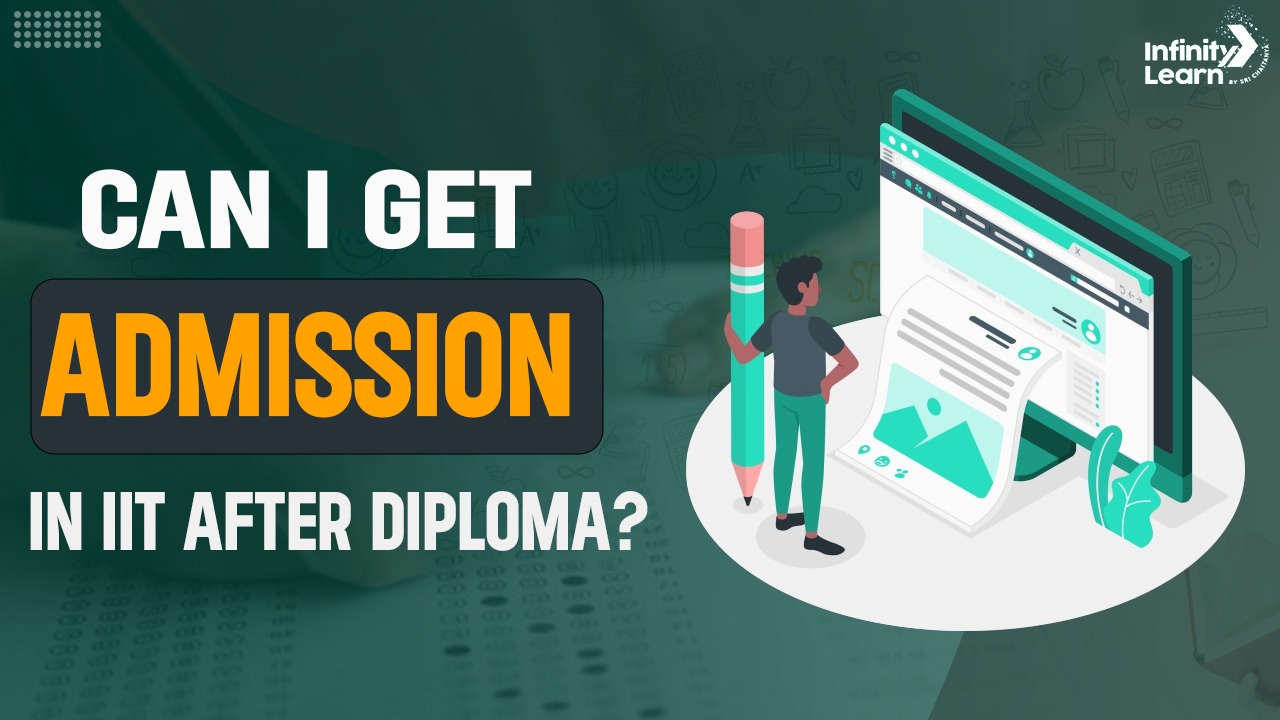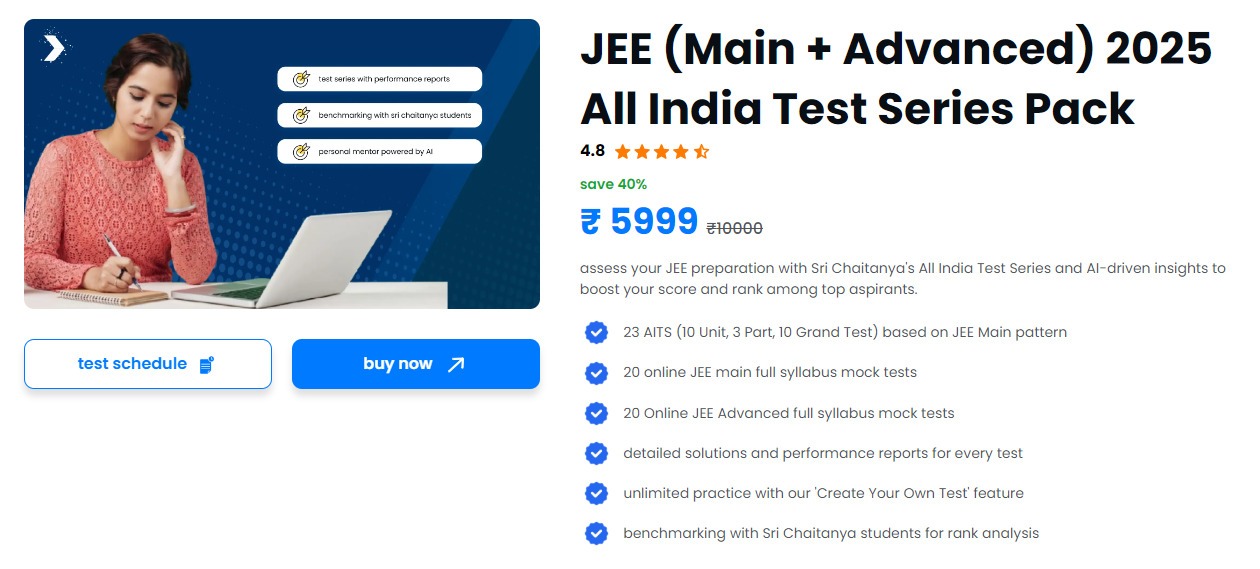Table of Contents
Admission In IIT After Diploma: IITs do not accept diploma holders right into their second year of B.Tech or B.E., as other colleges do. In general, diploma holders who wish to pursue engineering at an IIT must take JEE Main and JEE Advanced and obtain a good score in order to be admitted to a top IIT institute. Students should read through the eligibility criteria carefully to gain a sense of the exam’s requirements.
- IIT does not offer direct admission. To get into a top engineering institute in India, every aspirant must go through a rigorous selection process. An aspirant can be a 12th pass or a diploma holder, but in order to obtain a place in an IIT, he or she must first take JEE Main and subsequently JEE Advanced (if qualified). There is no easy or quick way to get into an IIT or an NIT.
- To get into IIT, you must go through a selection process.
- To begin, you must take the JEE Main exam. If your rank is among the top 2,50,000, you are eligible to take the JEE Advanced exam. This threshold applies to both the 12th pass and a diploma holder.

IIT offers lateral admissions
The Indian Institutes of Technology do not allow lateral entry into Bachelor of Engineering programmes. There is no facility in IITs for diploma holders to gain straight admission to the second year of a four-year degree programme.
So, if a candidate has finished a diploma in engineering and wishes to pursue further studies at one of India’s top engineering colleges, such as the Indian Institutes of Technology, the only choice is to follow a general pathway, such as JEE Main and JEE Advanced. They will be allowed to enrol in the first year of the B. Tech programme at IIT in this manner.
JEE Advanced Admission to IIT B. Tech
Students with a diploma in engineering can enroll in B. Tech courses at the Indian Institutes of Technology if they follow the normal admissions process for undergraduate enrollment. There is a certain method to follow in order to gain admission to an IIT after completing a diploma, which is outlined below:
- Attempt JEE Main – Candidates must register for the Joint Entrance Examination and appear in it. If a candidate chooses to apply to colleges other than IITs, he or she must take JEE Main, which is a common entrance exam for engineering admissions to a variety of institutes. However, not all institutes accept diploma holders. The National Testing Agency administers JEE Main twice a year, usually in January and April.
- Candidates who qualify for the JEE Main test among the top 2,50,000 rank holders are eligible to appear for the JEE Advanced exam.
- JEE Advanced Qualification – The conducting authorities set a standard cutoff for JEE Advanced, and individuals who achieve a score that is higher than the cutoff for their category are regarded to have passed the exam. However, the cutoffs for the specific IITs to which the candidates seek to apply are issued individually. So, in order to apply for admission to an IIT after completing a diploma, individuals must ensure that they meet the institute’s cutoff.
- Counselling by the Joint Seat Allocation Authority (JoSAA) – The Joint Seat Allocation Authority (JoSAA) is the entity in charge of the subsequent counselling process. As a result, JEE Advanced qualified students will need to apply for JoSAA registration and fill out the option form. They will subsequently be required to take part in JoSAA Counseling, which will be performed entirely online. Following that, the authorities will announce the rank list, based on which seats will be allocated and admissions to IIT will be made.
First Year B. Tech Admission
- Once the entire process has been completed, candidates will be required to pay the required fee in order to gain admission to an IIT after completing their diploma into the first year of B. Tech. As previously stated, IITs do not provide lateral entry admissions to diploma holders into the second year.
- As a result, while students who seek to study B. Tech with admission to an IIT after completing their diploma will lose a year, engineering from a top institute will not be a waste of time. If a student believes he or she is committed enough to pass the JEE Advanced examination, there should be no room for doubt.
JEE Mains Eligibility Criteria
- To apply for JEE Main, you must be an Indian citizen. Foreign nationals and non-resident Indians (NRIs) are also eligible to apply. Please review the eligibility requirements for foreign nationals and NRIs.
- Aspirants must have completed and passed the 10+2 or equivalent exam. It should come from a reputable organization.
- Aspirants must have taken and passed Physics, Chemistry, and Mathematics in addition to Biology, Biotechnology, or Technical Vocational subjects in their 12th/equivalent examination. In addition, students must have taken at least 5 subject papers in their 12th/equivalent test.
- A candidate who sits for the 12th/equivalent class examination in the same year as the JEE Main exam is also eligible.
- To be eligible, a diploma holder must sit JEE Main to be eligible for JEE Advanced.
JEE Advanced Eligibility Criteria
- JEE Advanced is for those who desire to study at an IIT. There are a few extra requirements in addition to the JEE Main eligibility criteria.
- The candidate must have taken the 12th board examination either the year before or the year before attempting the JEE advanced.
- The aspirant must have received a minimum of 75% in 12th grade or an equivalent level.
- 65 per cent (aggregate) for students in the SC/ST/PWD categories in the 12th or equivalent examination.
- A candidate is only eligible to sit the JEE Advanced exam if he or she is among the top 2,50,000 JEE Main exam rank holders.
The Admission Process
To gain admission to IIT after a diploma, students must follow these steps:
Step 1: Qualify for JEE Main
Diploma holders must first appear for JEE Main, which is conducted by the National Testing Agency (NTA). This is a preliminary test that filters candidates for JEE Advanced. Although a diploma is not equivalent to 10+2, students are allowed to take JEE Main, but the diploma marks are not considered for ranking.
Step 2: Appear for JEE Advanced
After clearing JEE Main, the next step is to qualify for JEE Advanced. Only the top candidates from JEE Main are allowed to appear for JEE Advanced. Scoring well in this exam is crucial, as it determines admission to IITs.
Step 3: JoSAA Counseling
Once you qualify for JEE Advanced, you can participate in the JoSAA counseling process. Based on your rank and preferences, you can select the IIT and branch you wish to join. If allotted a seat, you can proceed with the admission process.
Challenges for Diploma Holders
While the opportunity exists, gaining admission to IIT after a diploma does come with certain challenges:
- No Direct Lateral Entry- Unlike some state engineering colleges, IITs do not offer lateral entry, which means diploma students must start from the first year of the B.Tech program.
- Tough Competition- The competition for JEE Main and JEE Advanced is intense, and diploma students may need additional preparation to compete with candidates who have recently completed their 10+2 education.
- Different Curriculum- The curriculum for a diploma program is often more hands-on and practical compared to the theoretical focus of the 10+2 curriculum. Therefore, diploma holders might need to brush up on subjects like Mathematics, Physics, and Chemistry to excel in JEE.
Frequently Asked Questions (FAQs)
How to get admission in IIT after a diploma in mechanical engineering?
To get admission into IIT after a diploma, you need to appear for JEE Main and JEE Advanced exams. IITs do not offer direct lateral entry for diploma holders, so you'll need to qualify through these exams and start from the first year of the B.Tech program.
Can diploma students get into IIT?
Yes, diploma students can get into IIT by clearing JEE Main and JEE Advanced. However, they must start from the first year of the B.Tech program since IITs do not allow lateral entry .
How can I join IIT or NIT after a diploma?
Diploma holders must appear for JEE Main and qualify for JEE Advanced to join IITs or NITs. NITs may offer lateral entry for diploma holders, but IITs require students to begin from the first year.
Are diploma students eligible for JEE Advanced?
Yes, diploma students are eligible for JEE Advanced if they qualify through JEE Main, but they must begin their studies from the first year in IITs, as there is no lateral entry provision .










